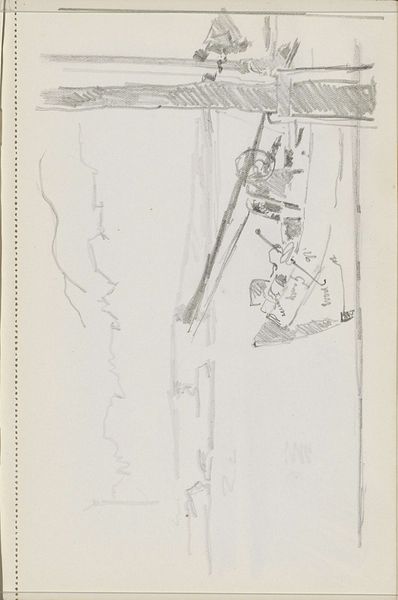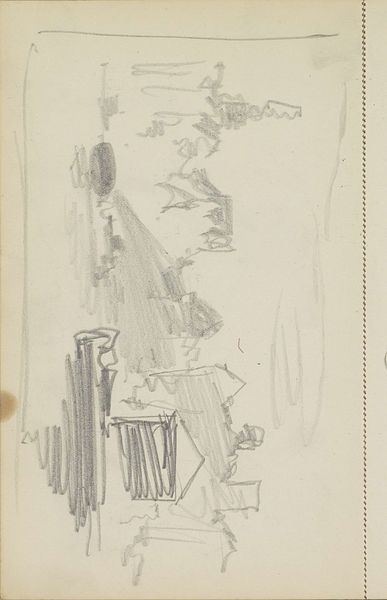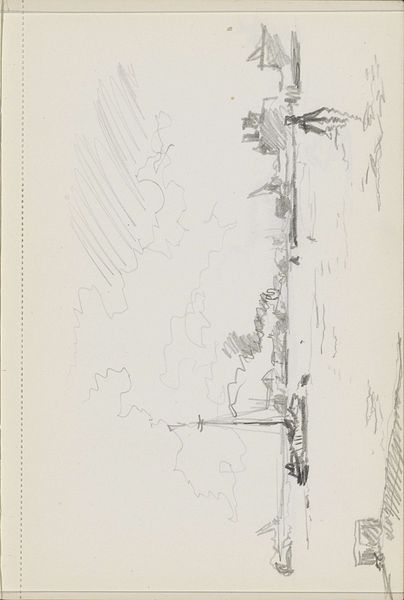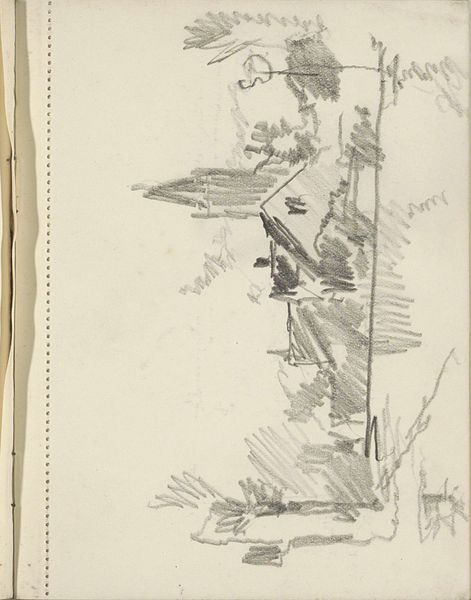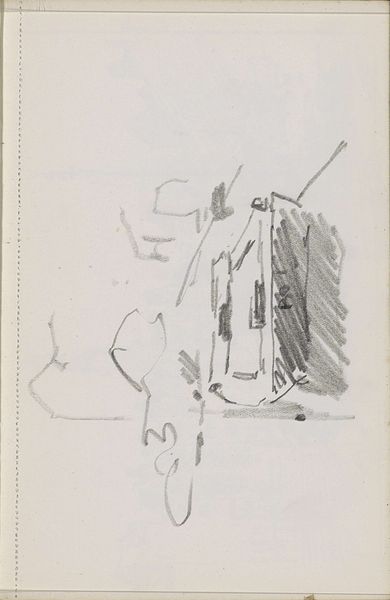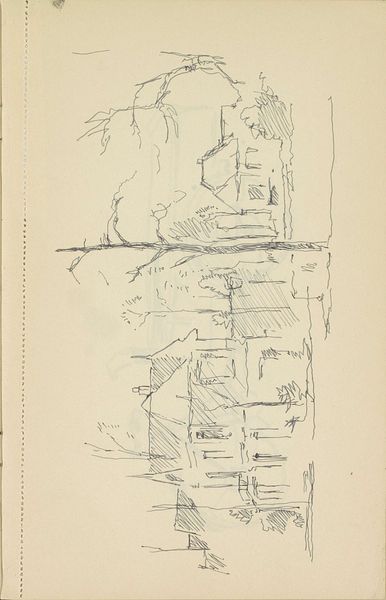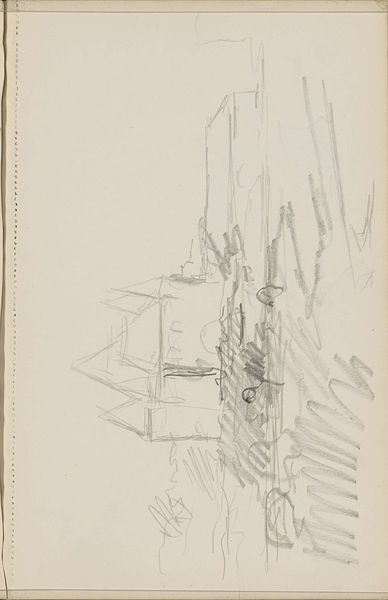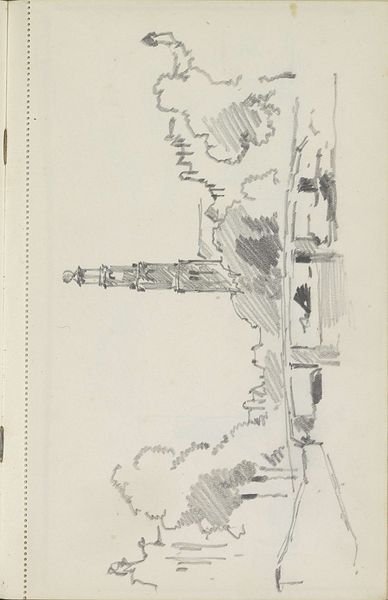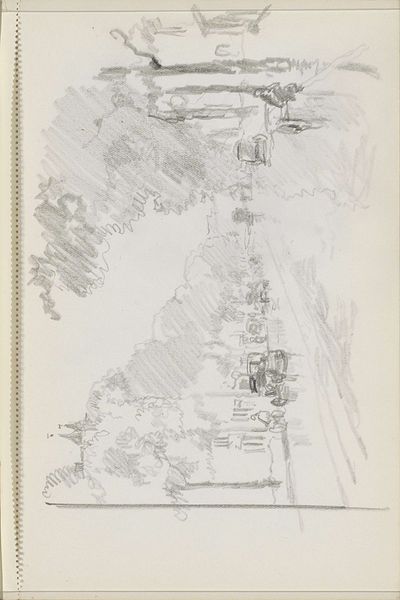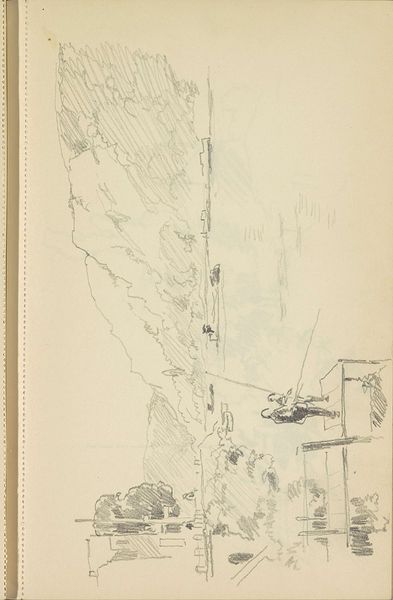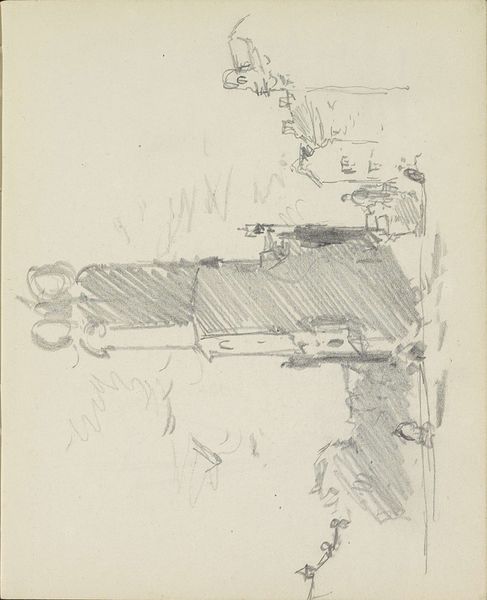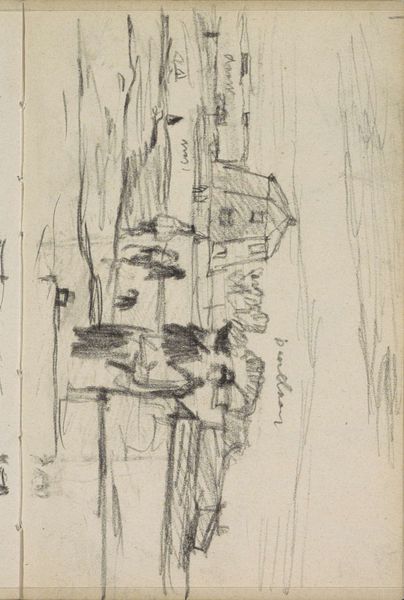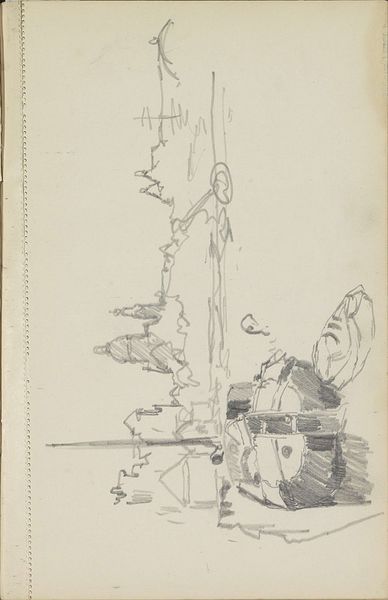
drawing, pencil
#
drawing
#
landscape
#
pencil
#
line
#
realism
Copyright: Rijks Museum: Open Domain
Curator: Here we have Cornelis Vreedenburgh's "Gezicht op een kade," dating roughly between 1890 and 1946, a pencil drawing currently held at the Rijksmuseum. Editor: Immediately, I'm struck by its simplicity. It has a dreamlike quality. The soft lines and shading evoke a sense of tranquility. Curator: Indeed. The artist masterfully utilizes the medium of pencil to create a composition that, although sparse, effectively captures a landscape scene. The realism in line creates a clear perspective. The lines delineate form, and the shadows create mass, which helps add dimensionality. Editor: How might the location of its creation impact the piece's cultural reception? I'm curious about how the subject, perhaps a commonplace dockside scene, takes on significance given the evolving societal contexts of the time. Curator: I think it's key to examine its realism as both a genre and style. This suggests it invites interpretation about labor, urban life, and perhaps the relationship of the Netherlands to water. Also the fact it’s not precisely dated impacts the socio-historic read. Does that shift it being a commentary on urban life at the turn of the century vs. during the wartime period of the 40's? Editor: It also has that effect on how to view its symbolism. As an audience, do we use modern sensibilities of seeing industry with the dock yard scene, or should we consider what values may have shifted through time? Curator: Ultimately, I appreciate Vreedenburgh's talent for capturing the subtleties of light and form, transforming what may have been an everyday subject into an atmospheric drawing with remarkable expressive impact. Editor: For me, this sketch encourages one to consider how lines and composition can transform a commonplace setting into something contemplative, making a historically contextualized drawing resonate with us on an individual level.
Comments
No comments
Be the first to comment and join the conversation on the ultimate creative platform.
